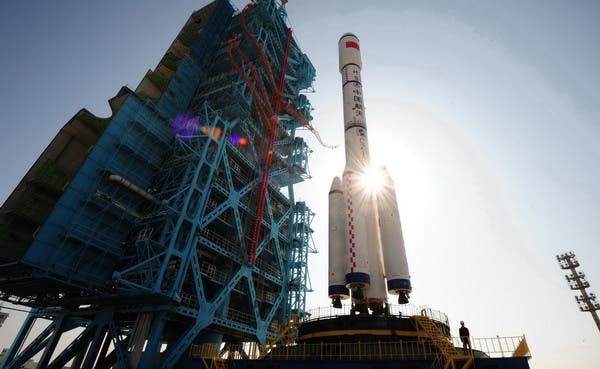
The Chinese space program is set to made a giant leap later this week, when its first orbiting docking station, the Tiangong-1, is set to be launched. Tiangong could pave the way for a future Chinese space station and for exploration further afield, most likely the moon, a long sought after destination by the Chinese.
Last-minute preparations for the launch of the Tiangong-1 spacecraft began at the Jiuquan Satellite Launch Center on Monday, when crews were putting in place pipes and cables that will be used to inject fuel into the rocket that will carry Tiangong-1 into outer space.
“The Tiangong itself is a very small craft, roughly about, I believe, eight tons, and it’s smaller than our SkyLab was.” Dean Cheng of the Heritage Foundation in Washington, D.C. “And the main purpose of this is two things: one, to practice docking maneuvers, and two, to allow Chinese astronauts to have a little more extended time in a microgravity environment.”
The 8.5-ton Tiangong-1 spacecraft will be launched from on top a Long March II-F rocket, part of an unmanned flight. The spaceship is 10.4 meter tall (a three-story building) and has a maximum diameter of 3.35 meters, a dimension shared by its launch vehicle. In comparison, the Shenzhou spaceship, the vehicle that made the first Chinese manned space flight possible in 2003 and for which the Tiangong-1 is designed to dock with, stands shorter, at nearly 9 meters, it’s slimmer, having a diameter of less than 3 meters, and weighs less. Conditions inside its experimental module will be adjusted to ensure the astronauts can live in an environment that contains enough oxygen, moisture and heat to be safe.
“If that works out well then we would expect to see, next year, missions Shenzhou 9 and Shenzhou 10, both of which would be manned, doing docking with the Tiangong craft and probably moderate-duration stays,” Cheng said.
First female Chinese astronauts set for Tiangong mission
During its two year mission orbiting around Earth, the Tiangong-1 will dock with China’s Shenzou-8, -9 and -10 spacecraft, and will house up to three astronauts at a time. On the confirmed astronaut list for the Shenzou flights there are currently scheduled 2 female astronauts, set to dock with the Tiangong station. This would mark the first female manned flight for the Chinese program. Zhang Jianqi, former deputy director of China’s manned space flights, says that both male and female astronauts train under the same standards; emphasizing that female astronauts do not receive special treatment. “Female astronauts are very likely to be involved in the manual docking procedures with laboratory modules in the future”, he says.


